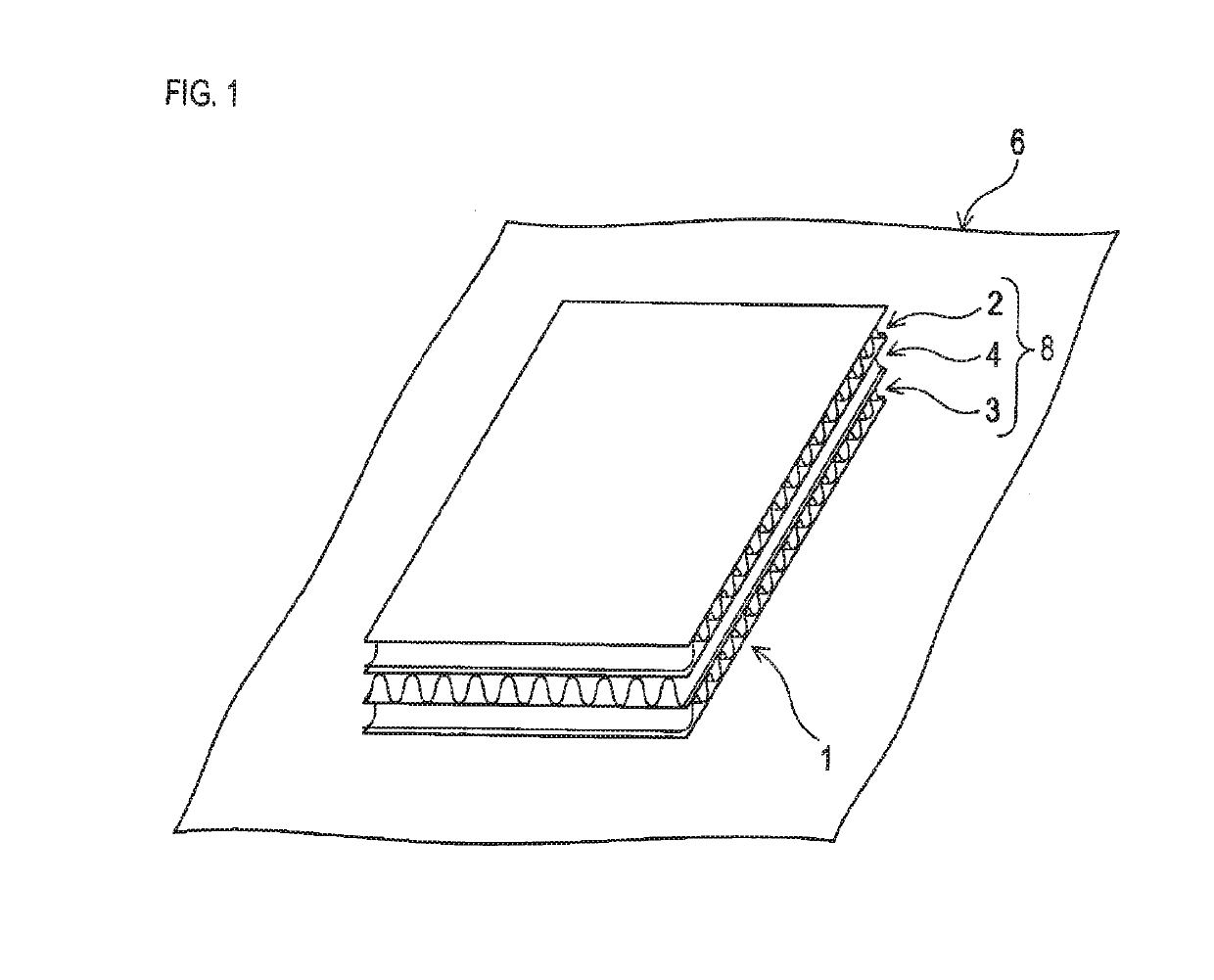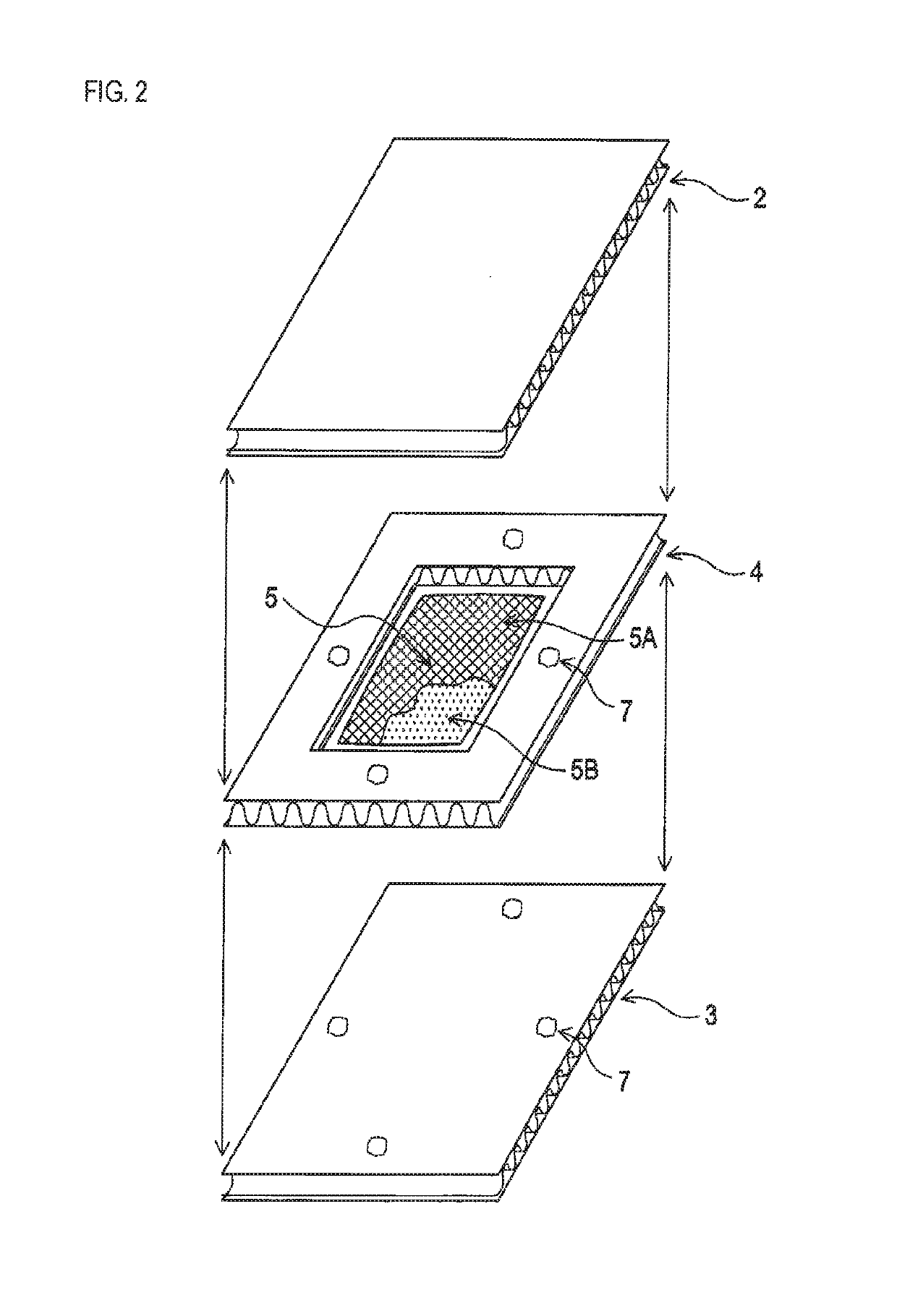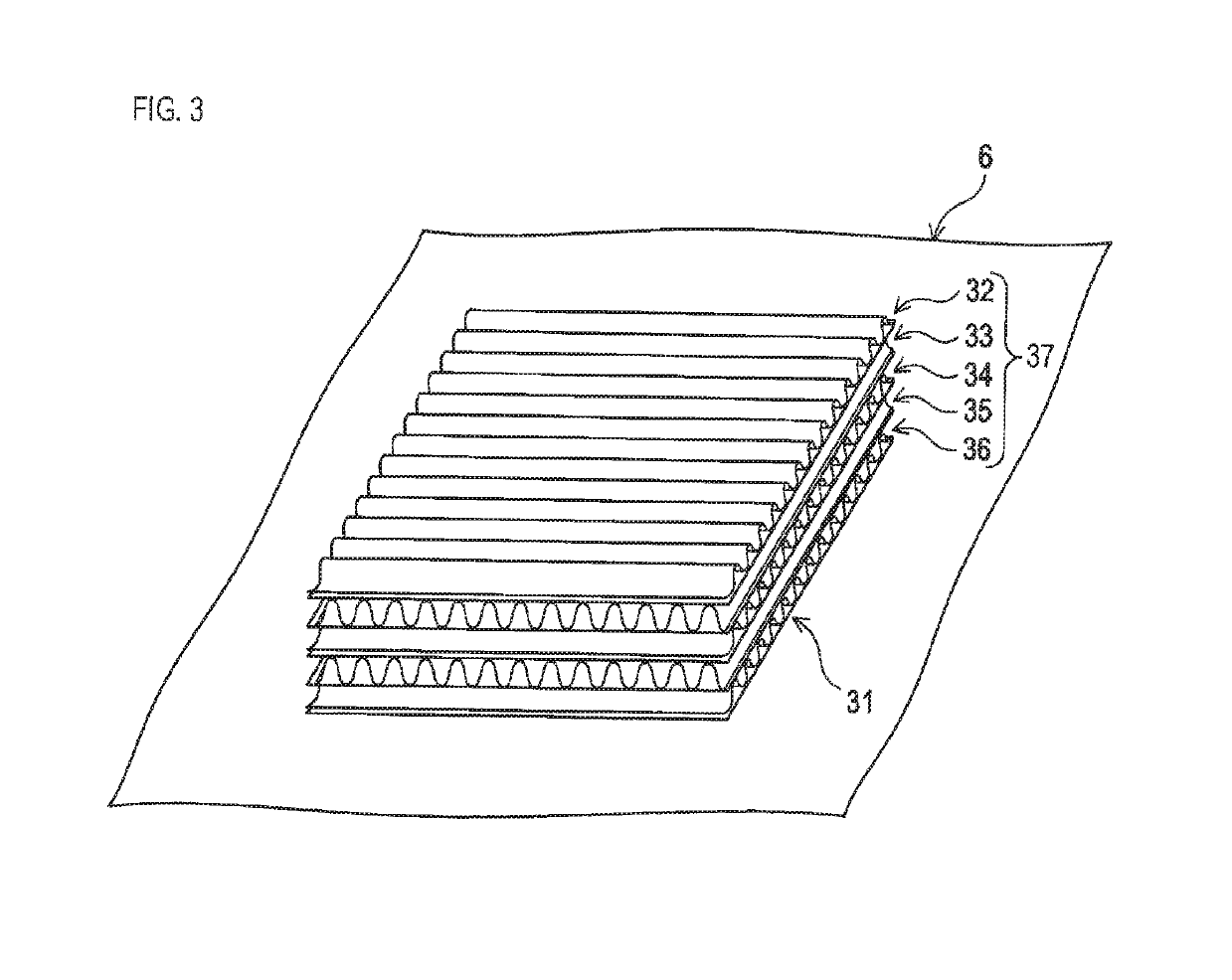Insect trap
a technology of insect traps and traps, which is applied in the field of insect traps, can solve the problems of decreasing the intake of fodder and the egg laying rate in the chicken industry, and achieve the effects of reducing the foul odor generated during the processing of chicken excreta, accelerating the biodegradation of fragments, and increasing the iron content of manur
- Summary
- Abstract
- Description
- Claims
- Application Information
AI Technical Summary
Benefits of technology
Problems solved by technology
Method used
Image
Examples
first embodiment
1. First Embodiment
[0019][1-1. Configuration]
[0020]An insect trap 1 shown in FIG. 1 and FIG. 2 comprises a layered body 8, and an exothermic body 5 arranged inside the layered body 8. The insect trap 1 is enclosed in an airtight outer bag 6.
[0021]The layered body 8 has a layered structure comprising three rectangle cardboard sheets 2, 3, and 4 (which correspond to one example of plate-like elements in the present specification). The cardboard sheets 2, 3, and 4 are those typically known and configured with a corrugated core material, and two liners that are respectively bonded to both sides of the core material to place the core interposed between the two liners. The cardboard sheets 2, 3, and 4 may be those configured with a core material, and one liner (so-called single-face cardboards).
[0022]The cardboard sheets 2, 3, and 4 selected for use are high in biodegradability. Specifically, the cardboard sheets 2, 3, and 4 made from 100 percent recycled paper are used. Use of such cardb...
second embodiment
2. Second Embodiment
[0050]Basic configurations of the second embodiment are the same as those of the first embodiment. Therefore, explanation is omitted with respect to common configurations, but is focused on differences. In the second embodiment, the same reference numerals as those of the first embodiment represent the same configurations, and therefore refer to the preceding explanations.
[0051][2-1. Configuration]
[0052]The insect trap 31 shown in FIG. 3 and FIG. 4 comprises the layered body 37, and an exothermic body 5 arranged inside the layered body 37.
[0053]The layered body 37 has a layered structure comprising five square cardboard sheets 32, 33, 34, 35, and 36.
[0054]Among the five cardboard sheets 32, 33, 34, 35, and 36, the cardboard sheets 33, 34, and 35, which are interposed between two cardboard sheets 32, and 36 situated as the most superficial layers of the layered body, each have their central area cut out to form a square opening. A housing space to house the exothe...
PUM
 Login to View More
Login to View More Abstract
Description
Claims
Application Information
 Login to View More
Login to View More - R&D
- Intellectual Property
- Life Sciences
- Materials
- Tech Scout
- Unparalleled Data Quality
- Higher Quality Content
- 60% Fewer Hallucinations
Browse by: Latest US Patents, China's latest patents, Technical Efficacy Thesaurus, Application Domain, Technology Topic, Popular Technical Reports.
© 2025 PatSnap. All rights reserved.Legal|Privacy policy|Modern Slavery Act Transparency Statement|Sitemap|About US| Contact US: help@patsnap.com



